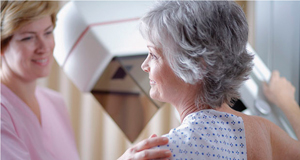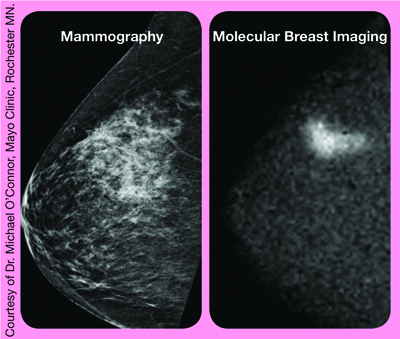
Take care of yourself during the month of love with 3D mammography offered at the Breast Care Center at Houston Methodist Sugar Land Hospital.
By Trish Johnson –
There is just no other month better to be in love than February. February 14th – St. Valentine’s Day – is known as the day of love as folks shower each other with candy, cards and flowers.
But a couple of other days in February also make it the best time to love a very important person – yourself. February 17th is Random Acts of Kindness Day and February 27th is No Brainer Day, two perfect reasons to take care of yourself this month as staying healthy is a random act of kindness you do for yourself, and maintaining your health is certainly a no-brainer.
With a nod toward helping you along on the journey to take care of your health, the Breast Care Center at Houston Methodist Sugar Land Hospital is offering women cutting-edge technology for detecting and identifying breast cancer and other anomalies.

Stephen Phillips, MD
The first hospital in the Greater Houston area to offer low-dose molecular breast imaging (MBI), according to Breast Care Center radiologist Dr. Stephen Phillips, Houston Methodist Sugar Land Hospital Breast Care Center also offers tomosynthesis, more commonly known as 3D mammography. “It’s a little bit of a misnomer, really,” Phillips explained. “The research mainly shows a reduction in false positives when it’s used, reducing the number of return visits for patients.”
According to the radiologist, tomosynthesis was developed for screening patients who show no symptoms of cancer and to screen women whose 2D mammography shows an abnormality. Phillips estimates less than half of U.S. medical facilities can offer tomosynthesis.
“If you think of a loaf of bread cut into many slices, it’s like tomosynthesis,” Phillips explained. “We’re able to see breast tissue in thin slices. It’s useful in examining high density breast tissue, where glandular tissue may hide small tumors. The way I look at it, it’s another tool in our toolbox.”
Phillips estimates perhaps 10 percent of U.S. facilities do offer MBI, which Houston Methodist Sugar Land Hospital Breast Care Center has offered for about three years. The technology was developed at the Mayo Clinic about 10 years ago, Phillips said, while he was there.
 “We use MBI for problem solving, when there’s a strong clinical suspicion there may be an abnormality,” Phillips said. “MBI is particularly useful for patients who cannot undergo a 2D mammogram as a screening of high density tissue, and as a screening for individuals who have a personal history with abnormalities.”
“We use MBI for problem solving, when there’s a strong clinical suspicion there may be an abnormality,” Phillips said. “MBI is particularly useful for patients who cannot undergo a 2D mammogram as a screening of high density tissue, and as a screening for individuals who have a personal history with abnormalities.”
Spotting abnormalities is a team effort, and self-exams are an important part of breast health. According to Obstetrics/Gynecology physician Dr. Deanna McDonald with Sugar Land OG/GYN Associates, many breast tissue lumps are discovered during self-examination.
“Breast self-examination is under controversy right now,” said McDonald. “The American Cancer Society says we shouldn’t be teaching breast self-examination. However, I don’t agree, and neither does the American College of Obstetrics/Gynecology. In fact, one study shows up to 60 percent of breast cancers are found that way. We all need to know our bodies, so we can notice changes.
“Women should do a self-examination a few days after their menstrual cycle, once a month,” McDonald advised. “For women without menstrual cycles, just pick one day a month, such as the first of the month, to do an exam.”
According to McDonald, the American College of Obstetrics/Gynecology recommends monthly self-examinations beginning at age 40. “I think maybe girls and women should start this at the onset of menstruation, especially if they have a family history of breast cancer and are high-risk,” said McDonald.
Phillips said the American College of Radiology recommends women have mammograms beginning at age 40, or earlier if there is a family history of breast cancer. Both MBIs and tomosynthesis are done on an out-patient basis at the Houston Methodist Sugar Land Breast Care Center. Tomosynthesis uses normal compression of the breast tissue and takes about 15 minutes, he noted.
MBI uses an intravenous (IV) injection of a low-dose isotope for imaging, uses very light compression and takes about half an hour to complete. “Typically, an MBI is covered by Medicare and most private insurance with prior approval,” Phillips said. “Tomosynthesis, however, is covered by Medicare but not currently covered by private insurance. Most patients pay an up-front charge of $50.”
The Breast Care Center is located on the campus of Houston Methodist Sugar Land Hospital at 16655 Southwest Freeway. If your physician thinks this technology may benefit you, call 281-242-PINK (7465) for an appointment.
















 “We use MBI for problem solving, when there’s a strong clinical suspicion there may be an abnormality,” Phillips said. “MBI is particularly useful for patients who cannot undergo a 2D mammogram as a screening of high density tissue, and as a screening for individuals who have a personal history with abnormalities.”
“We use MBI for problem solving, when there’s a strong clinical suspicion there may be an abnormality,” Phillips said. “MBI is particularly useful for patients who cannot undergo a 2D mammogram as a screening of high density tissue, and as a screening for individuals who have a personal history with abnormalities.”